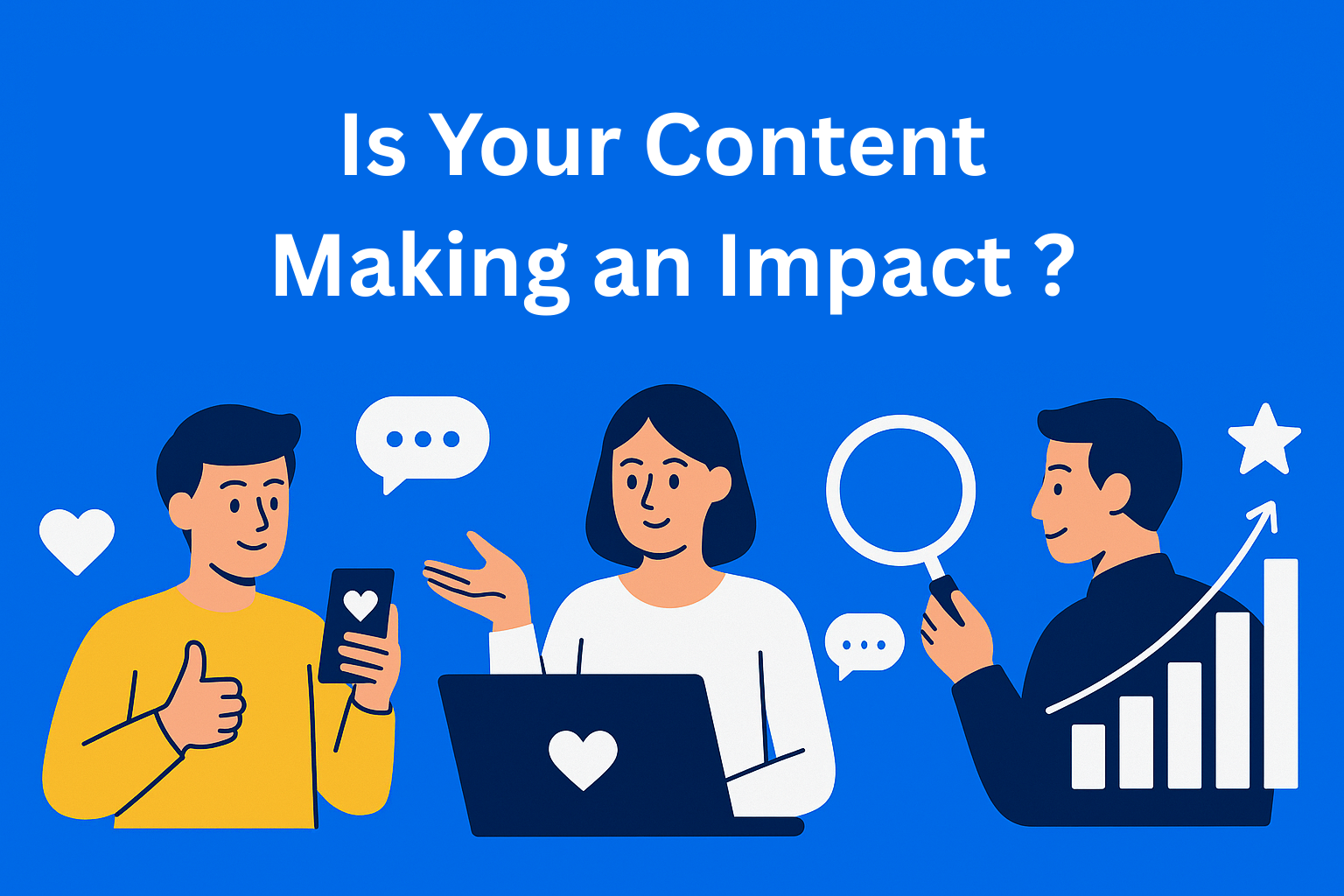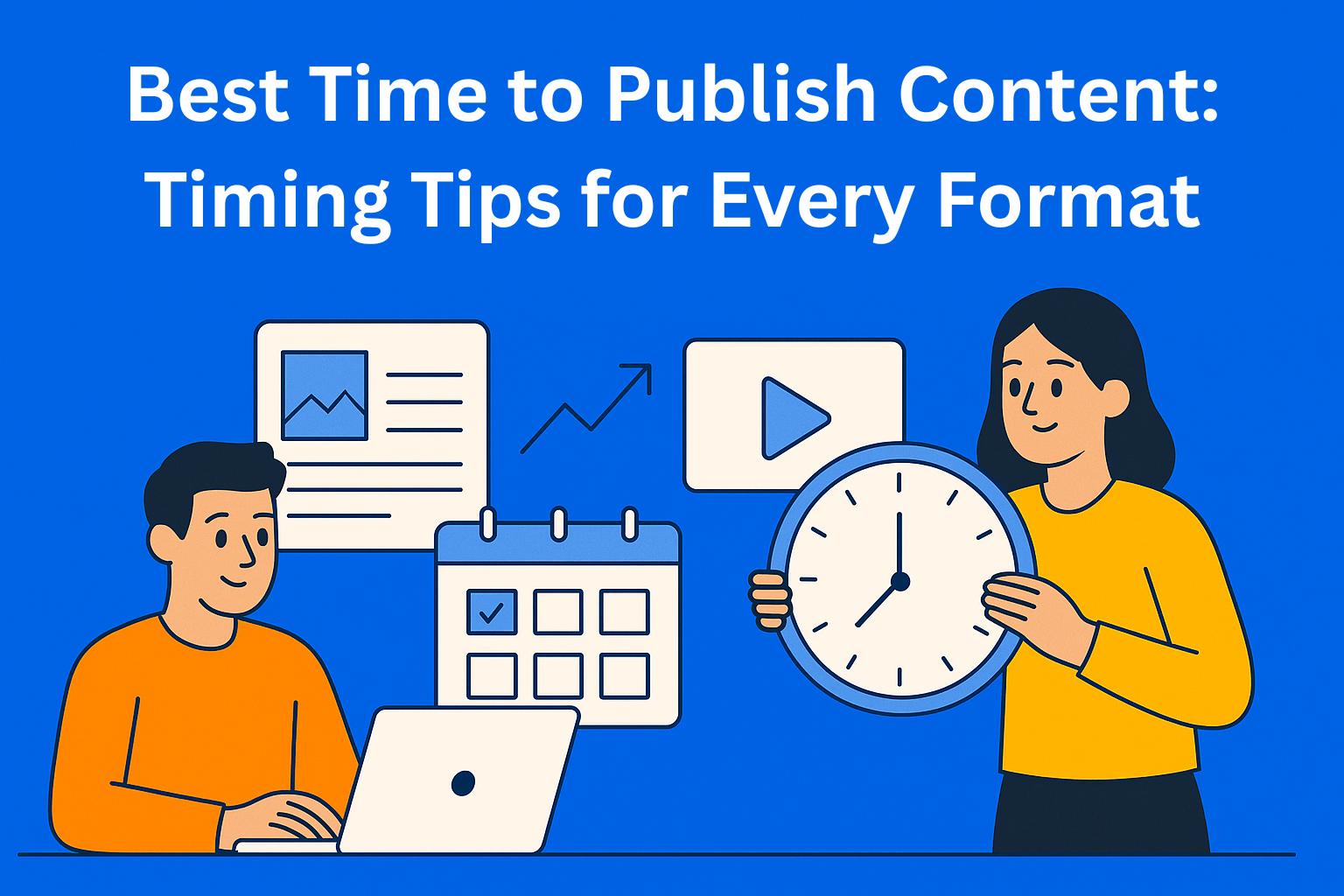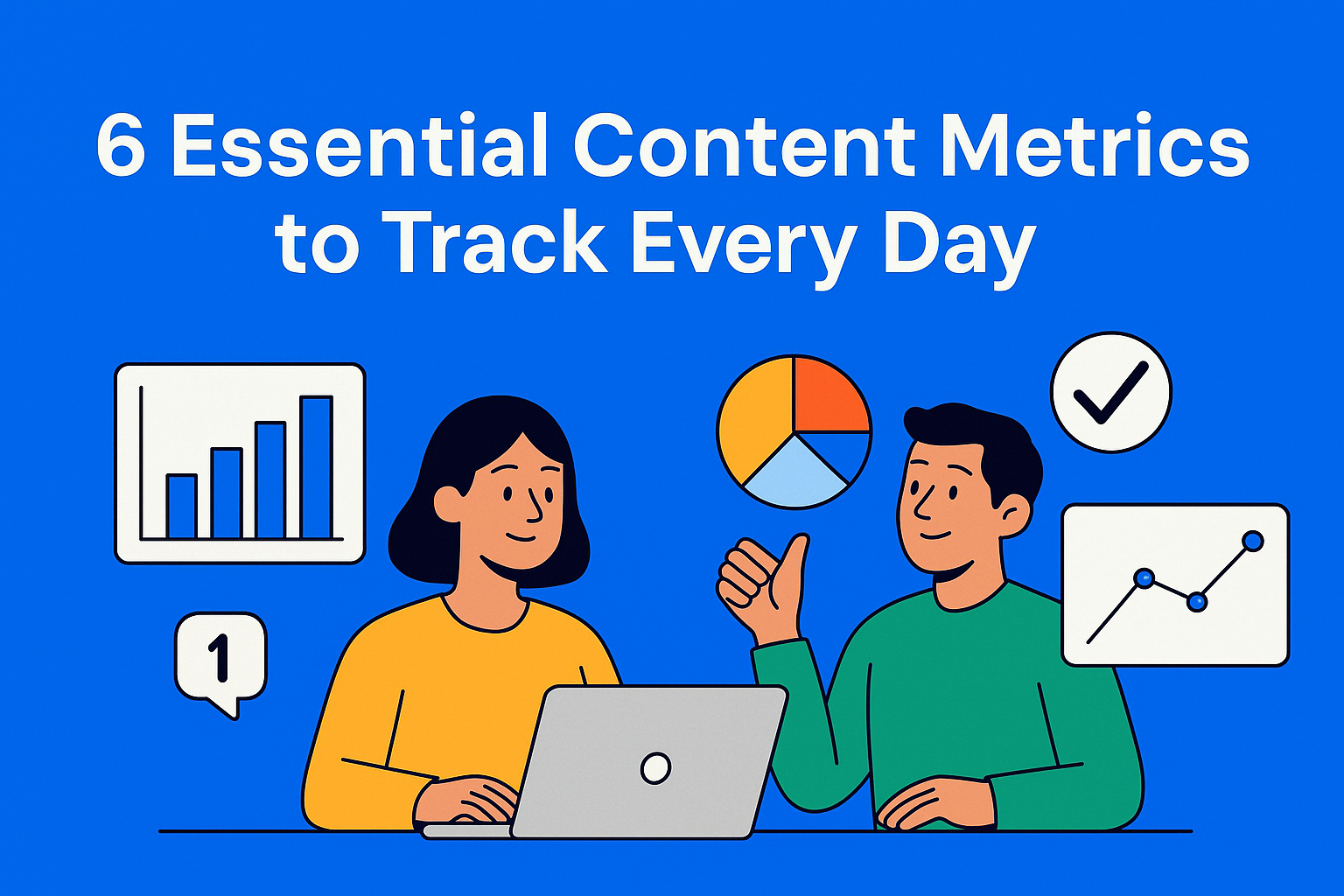Is Your Content Making an Impact ? 5 Ways to Find Out
Discover 5 simple ways to check if your content truly makes an impact. Learn how to track engagement, measure conversions, get feedback, and build authority so your content leaves a lasting mark.

Today, everyone is creating content - articles, blogs, videos, social media posts. But one question always comes up: is that content really making an impact? Just writing or publishing something does not mean people will pay attention or that your work will deliver results. If you want to know whether your effort is paying off, you need to pay attention to a few clear signs and metrics. Below, we will go through 5 simple and logical ways to discover if your content truly makes a difference.
Key Takeaways
- Engagement reflects real impact - likes and comments are nice, but meaningful interactions show true content value.
- Retention metrics matter - if users stay to read or watch your content fully, you’ve captured their attention.
- Conversions are the proof - when people take action (subscribe, download, click), it confirms your content is working.
- Feedback is a powerful signal - messages, shares, and even criticism are signs that your content resonates.
- Authority takes time but speaks volumes - being quoted, referenced, or invited to contribute means your voice is trusted.
1. Analyze Audience Engagement
The first and easiest way to check if your content has an effect is to see how many people are truly engaging with it.
Audience engagement means that people not only see your content but also react to it. This can include:
- Likes
- Comments
- Shares
- Link clicks
If people leave comments, especially detailed and thoughtful ones, it’s a clear sign that they took the time to understand what you wrote. For example, if you write a blog about marketing and get a comment like: “This helped me understand how SEO works better”, you know you’ve hit the mark.
Short comments like “great” or “nice” are fine, but they’re not strong indicators. That’s why you should always look at the quality of interaction, not just the quantity.
This is especially important on social media. If people just scroll past your post, your content isn’t really making an impact. But if they stop, ask questions, or share it with others, it means your content is valuable.
1. Analyze Audience Engagement
The first and easiest way to check if your content has an effect is to see how many people are truly engaging with it.
Audience engagement means that people not only see your content but also react to it. This can include:
- Likes
- Comments
- Shares
- Link clicks
If people leave comments, especially detailed and thoughtful ones, it’s a clear sign that they took the time to understand what you wrote. For example, if you write a blog about marketing and get a comment like: “This helped me understand how SEO works better”, you know you’ve hit the mark.
Short comments like “great” or “nice” are fine, but they’re not strong indicators. That’s why you should always look at the quality of interaction, not just the quantity.
This is especially important on social media. If people just scroll past your post, your content isn’t really making an impact. But if they stop, ask questions, or share it with others, it means your content is valuable.
2. Check Retention and Reading Time Metrics
Another important indicator is how long people stay with your content.
- If you write a blog post - check the average reading time.
- If you create a video - check how many people watch it until the end.
If the average time on a page is only a few seconds, that means people are leaving quickly and the content didn’t hold their attention. This is called the bounce rate. When the bounce rate is high, it may mean the title caught their eye, but the content didn’t deliver on its promise.
Good signs include when people:
- Stay long enough to read the entire article
- Watch the video until the end
- Explore other pages on your website after reading
All of this means your content is relevant, interesting, and useful, and that you managed to keep their attention.
To measure this accurately, you can use tools such as Google Analytics (to track time on page and bounce rate), YouTube Analytics (to measure video retention), or Hotjar and Microsoft Clarity (to see user behavior on your site). These tools give you a clear picture of how long people stay and how they navigate through your content.
3. Measuring Conversions
The real impact of content is measured through actions people take. This is called conversion. A conversion doesn’t always mean a purchase - it can be signing up for a newsletter, downloading an e-book, registering for a webinar, or even clicking on a specific link.
To know whether your content is working, you need to set clear call-to-action (CTA) points. For example, at the end of a blog you can add a prompt like "Sign up for our newsletter", "Read a related article" or "Try Free Trial". If people actually follow those prompts, you know your content has power.
There are two main types of conversion effects:
- Brand awareness - people get to know you and start remembering you.
- Direct conversions - people take concrete actions that bring visible results.
If you are achieving both, your content definitely has value.
4. Audience Feedback
Another very clear way to know if your content has an impact is by tracking direct feedback.
People can leave you comments, send you messages, or respond to surveys.
If you receive feedback like: “This really helped me” or “Can you write more on this topic?” - that’s an excellent sign.
Feedback isn’t always just words. If your content is often shared, it means people find it valuable. When someone recommends your content to friends or colleagues, that’s a strong sign that what you’re doing matters.
Even criticism can be useful. If someone says your content was too long or not clear enough, don’t see it as something negative - it’s a chance to improve and make it even better.
5. Authority and Recognition
One of the most important signs that your content makes a difference is building authority in your field. If people start quoting you, sharing your articles as references, or mentioning you in conversations, it means you are becoming relevant in that area.
SEO also plays a big role. If your content starts showing up in searches and rising in rankings, it means Google recognizes its quality. The more often your content is linked and used as a source, the stronger your authority becomes.
Also, if you are invited to interviews, asked to write guest articles, or offered collaborations, that is a direct sign of recognition. This kind of impact goes beyond a single blog post or video - it’s proof that you’ve built trust and credibility.
Conclusion
Checking if your content has an impact doesn’t mean looking at only one metric. You need to see the bigger picture.
If you pay attention to these 5 things, you’ll know exactly whether what you’re doing is making a difference or not. The most important thing is to be consistent, track results, and keep improving your content.
Finally, remember: good content is not just the one that gets read - it’s the one that leaves a mark and drives action.






